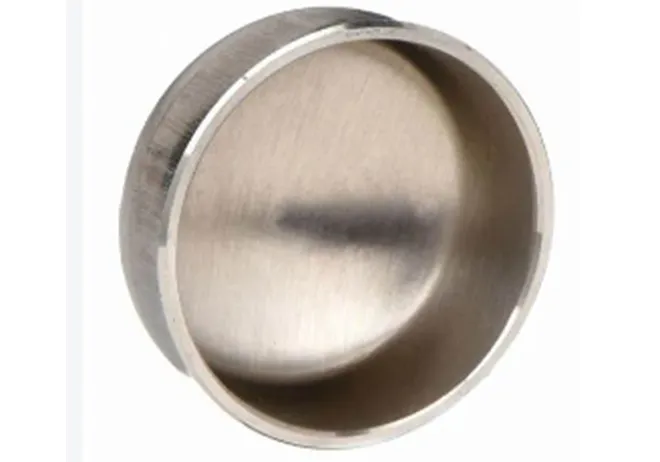-
Cangzhou Yulong Steel Co., Ltd.
-
Phone:
+86 13303177267 -
Email:
admin@ylsteelfittings.com
- English
- Arabic
- Italian
- Spanish
- Portuguese
- German
- kazakh
- Persian
- Greek
- French
- Russian
- Polish
- Thai
- Indonesian
- Vietnamese
- Zulu
- Korean
- Uzbek
- Hindi
- Serbian
- Malay
- Ukrainian
- Gujarati
- Haitian Creole
- hausa
- hawaiian
- Hebrew
- Miao
- Hungarian
- Icelandic
- igbo
- irish
- Japanese
- Javanese
- Kannada
- Khmer
- Rwandese
- Afrikaans
- Albanian
- Amharic
- Armenian
- Azerbaijani
- Basque
- Belarusian
- Bengali
- Bosnian
- Bulgarian
- Catalan
- Cebuano
- China
- China (Taiwan)
- Corsican
- Croatian
- Czech
- Danish
- Esperanto
- Estonian
- Finnish
- Frisian
- Galician
- Georgian
- Kurdish
- Kyrgyz
- Lao
- Latin
- Latvian
- Lithuanian
- Luxembourgish
- Macedonian
- Malgashi
- Malayalam
- Maltese
- Maori
- Marathi
- Mongolian
- Myanmar
- Nepali
- Norwegian
- Norwegian
- Occitan
- Pashto
- Dutch
- Punjabi
- Romanian
- Samoan
- Scottish Gaelic
- Sesotho
- Shona
- Sindhi
- Sinhala
- Slovak
- Slovenian
- Somali
- Sundanese
- Swahili
- Swedish
- Tagalog
- Tajik
- Tamil
- Tatar
- Telugu
- Turkish
- Turkmen
- Urdu
- Uighur
- Welsh
- Bantu
- Yiddish
- Yoruba

Oct . 17, 2024 10:31 Back to list
Carbon Steel Welded Fittings for Reliable Industrial Applications and Structural Integrity
Understanding Carbon Steel Weld Fittings A Comprehensive Guide
Carbon steel weld fittings are essential components in piping systems used across various industries, including oil and gas, chemical, and marine applications. These fittings play a crucial role in connecting pipes, allowing for directional changes, and facilitating the joining of different pipe sections. This article explores the characteristics, applications, advantages, and considerations associated with carbon steel weld fittings.
What are Carbon Steel Weld Fittings?
Carbon steel is an iron-carbon alloy that combines iron with varying amounts of carbon, typically up to 2%. The carbon content influences the mechanical properties of the steel, such as strength, hardness, and ductility. Weld fittings made from carbon steel are manufactured using this material, which is known for its excellent strength and durability. Common types of carbon steel weld fittings include elbows, tees, reducers, and caps.
Characteristics of Carbon Steel Weld Fittings
1. High Strength Carbon steel weld fittings exhibit significant tensile strength, making them suitable for high-pressure applications. Their robustness ensures they can withstand substantial stress and strain during operation.
2. Ductility Despite their strength, carbon steel fittings maintain ductility, allowing them to deform under pressure without fracturing. This characteristic is invaluable in dynamic environments where thermal expansion and contraction occur.
3. Weldability Carbon steel is highly weldable, facilitating easy installation and repair. The fitting can be seamlessly integrated into existing piping systems, providing versatility in design and application.
4. Cost-Effectiveness Compared to other materials like stainless steel or alloy steel, carbon steel is more economical. This cost efficiency makes it a popular choice for large-scale projects.
Applications of Carbon Steel Weld Fittings
Carbon steel weld fittings are widely utilized in various sectors
1. Oil and Gas Industry These fittings are crucial for constructing pipelines used to transport crude oil, natural gas, and other petroleum products. Their high strength and ability to endure harsh environmental conditions make them ideal for this industry.
2. Chemical Processing Carbon steel fittings are employed in chemical plants where durability and resistance to pressure are vital. They facilitate the movement of chemicals and other substances through complex piping systems.
carbon steel weld fittings

3. Marine Applications The marine industry often requires fittings that can withstand corrosion and saltwater exposure. While carbon steel is susceptible to rust, various coatings and treatments can enhance its resistance to corrosion when used in marine environments.
4. Construction In building structures, carbon steel weld fittings are used in plumbing, HVAC systems, and fire protection systems, showcasing their versatility and reliability.
Advantages of Using Carbon Steel Weld Fittings
1. Durability and Longevity Carbon steel fittings are designed to last, contributing to the overall lifespan of the piping system. Their resistance to wear and tear ensures reduced maintenance costs over time.
2. High Performance Under Pressure These fittings can operate effectively under high-pressure conditions, making them suitable for demanding industrial environments.
3. Customizability Carbon steel weld fittings can be manufactured to meet specific project requirements, including various sizes and shapes. This adaptability allows for more tailored solutions in complex piping systems.
Considerations When Using Carbon Steel Weld Fittings
While carbon steel weld fittings offer numerous benefits, some considerations are essential for optimal performance
1. Corrosion Resistance Carbon steel is prone to rust if not properly treated. Utilizing coatings or selecting alternative materials in corrosive environments is prudent.
2. Temperature Limitations Although carbon steel withstands high temperatures, extreme heat can affect its mechanical properties. Understanding the thermal limits is crucial for ensuring safety and performance.
3. Proper Installation Correct welding techniques and practices are necessary to ensure that weld fittings function as intended. Inadequate installation can lead to leaks and system failures.
Conclusion
Carbon steel weld fittings are vital components in numerous piping systems, celebrated for their strength, versatility, and cost-efficiency. By understanding their characteristics, applications, and advantages, professionals can make informed decisions when selecting fittings for their projects. As industries continue to evolve, the demand for durable and reliable components like carbon steel weld fittings is expected to grow, cementing their role in modern infrastructure.
Latest news
-
ANSI 150P SS304 SO FLANGE
NewsFeb.14,2025
-
ASTM A333GR6 STEEL PIPE
NewsJan.20,2025
-
ANSI B16.5 WELDING NECK FLANGE
NewsJan.15,2026
-
ANSI B16.5 SLIP-ON FLANGE
NewsApr.19,2024
-
SABS 1123 FLANGE
NewsJan.15,2025
-
DIN86044 PLATE FLANGE
NewsApr.19,2024
-
DIN2527 BLIND FLANGE
NewsApr.12,2024
-
JIS B2311 Butt-Welding Fittings LR/SR 45°/90° /180°Seamless/Weld
NewsApr.23,2024











